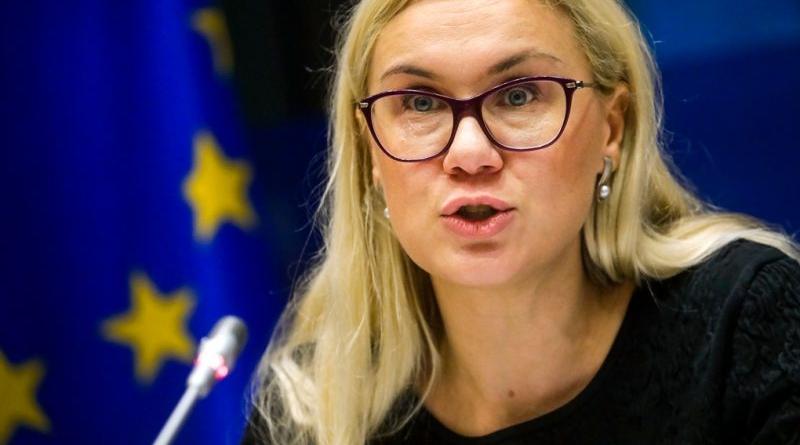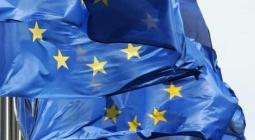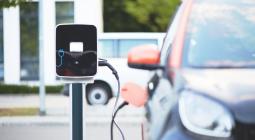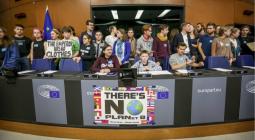LEAK: ‘Efficiency first’ is top priority of draft EU energy strategy.

Efficiency must be at the core of Europe’s energy policy, the European Commission says in a draft policy document outlining its vision of a more agile, low-carbon energy system powered chiefly by renewable electricity.
With its energy system integration strategy, the Commission hopes to achieve decarbonisation at the lowest possible cost by using the relative strengths of different energy carriers – whether electricity, gas or heat.
“Today’s energy system is still built on several parallel, vertical energy value chains, which rigidly link specific energy resources with specific end-use sectors,” the Commission says in its draft ‘strategy for energy system integration,’ due to be presented on Wednesday (8 July).
“Europe’s energy future must be more resource-efficient, rely on an ever-growing share of renewable energies, integrate different energy carriers flexibly and be further distributed across space,” the document says.
The policy strategy, which is still subject to change, does not contain legislative proposals; those will come up mainly next year, with a batch of new legislation expected in June.
However, it does highlight a revolutionary vision for the “planning and operation of the energy system as a whole,” which the Commission boils down to three things:
- a more ‘circular’ energy system, with energy efficiency at its core,
- greater direct electrification of end-use sectors, and
- using renewable and low-carbon fuels, including hydrogen, for end-use applications like cement or steelmaking where direct heating or electrification are not feasible.
Different energy carriers – electricity, gas and heat – can each play to their strengths and should be allowed to flow seamlessly between households, transport and industry whenever they enable deeper decarbonisation at least cost.
That way, “synergies” between different energy sectors will bring down the costs of reaching the EU’s 2050 objective of achieving climate neutrality, the EU executive says.
Circularity and connected infrastructure
According to the Commission, “mainstreaming the energy-efficiency-first principle across sectoral policies is at the core of system integration.”
To that end, the strategy flags several EU policy initiatives, such as:
- Reviewing the EU’s Primary Energy Factor (PEF), which measures the efficiency of energy production at source. This indicator should be revised in order to “facilitate comparisons of savings across energy carriers” and “properly reflect the life cycle energy use of the different energy carriers,” the draft says.
- Leveraging the upcoming building renovation wave in order “to accelerate the uptake of energy and resource efficiency measures and of renewables in buildings”.
- Building on the EU’s circular economy action plan to facilitate “reuse of waste heat”, “the untapped use of waste water and biological waste and residues” as well as the use of “local energy sources”.
Facilitating cross-sectoral flows of energy will also require infrastructure changes. For example the construction of more district heating systems, which provide entire neighbourhoods with hot water and can be connected to local industrial waste heat sources.
Also at a large-scale, system integration calls for a “holistic approach” to infrastructure planning, with more “physical links” between energy carriers, infrastructure and end-use sectors.
Electrification and renewables
Producing more renewable electricity is an obvious priority in the pursuit of decarbonisation. To that end, the Commission is expected to give renewables a boost with an EU strategy for offshore wind expected in the autumn.
According to the document, the growing use of electricity will help decarbonise sectors that are still heavily dependent on fossil fuels such as buildings, industry and transport.
Electrification will also play a “central role” in the upcoming building renovation wave, “in particular through the roll-out of heat pumps for space heating and cooling,” it says.
The benefits of electrification for end-use sectors such as transport and heating can also provide storage and flexibility, for instance by using car batteries.
“In particular, smart charging and so-called Vehicle-to-Grid (V2G) services will be essential to manage grid congestion and limit costly investments into grid capacity,” the document states.
Renewable and low-carbon fuels
But electrification is not a silver bullet either, the Commission admits.
“While direct electrification and renewable heat present the most cost-effective decarbonisation options in many cases, there are a number of end-use applications where direct renewable heating or electrification might not be feasible or have higher costs,” the document states.
“Here, renewable gases and liquids produced from biomass, or hydrogen produced from renewable electricity can offer solutions,” the document states, citing biogas, biomethane, biofuels, renewable and low-carbon hydrogen or synthetic fuels.
“Biofuels will have an important role to play, mainly in hard-to-decarbonise transport modes, such as aviation or maritime – including through hybridisation projects linking biofuels and renewable hydrogen production,” it adds.
One example includes “biomethane produced from organic waste injected in gas networks at a local level, or ‘vehicle-to-grid’ services,” the Commission writes.
Earlier this year, EU energy commissioner Kadri Simson announced that hydrogen would play a “central role” in the Energy System Integration strategy. That will be elaborated further in a separate hydrogen strategy.
Energy markets and digitalisation
A major obstacle towards greater efficiency and circularity are the energy markets themselves, the document continues.
“In many EU member states, taxes and levies on electricity are higher, both in absolute value and as a share of total price, than for coal, gas or heating oil,” the Commission says.
Here, the EU executive calls on member states to fully implement existing electricity market rules, which were last revised in 2019, in particular those related to day-ahead and intraday trading.
On the gas side, internal market rules will be revised next year, with a much-awaited decarbonisation package aimed at facilitating the uptake of renewable gases.
“In this context, the areas to look at include the connection to infrastructure and the market access for distributed production of renewable gases, including at the distribution level,” the document states
Greater links between energy carriers, infrastructure and end-use sectors will also be facilitated by digitalisation.
Data exchanges relying on sensors embedded in energy infrastructure and using artificial intelligence, 5G and distributed ledger technologies “can enhance forecasting, allow the remote monitoring and management of distributed generation and improve asset optimisation, including the on-site use of self-generation,” the Commission writes.
A “digitalisation of energy action plan,” due to be published next year, will aim to “develop to develop a competitive market for digital energy services that ensures data privacy and sovereignty,” the document says.
Read the full policy paper here.
6 July 2020
Euractiv




